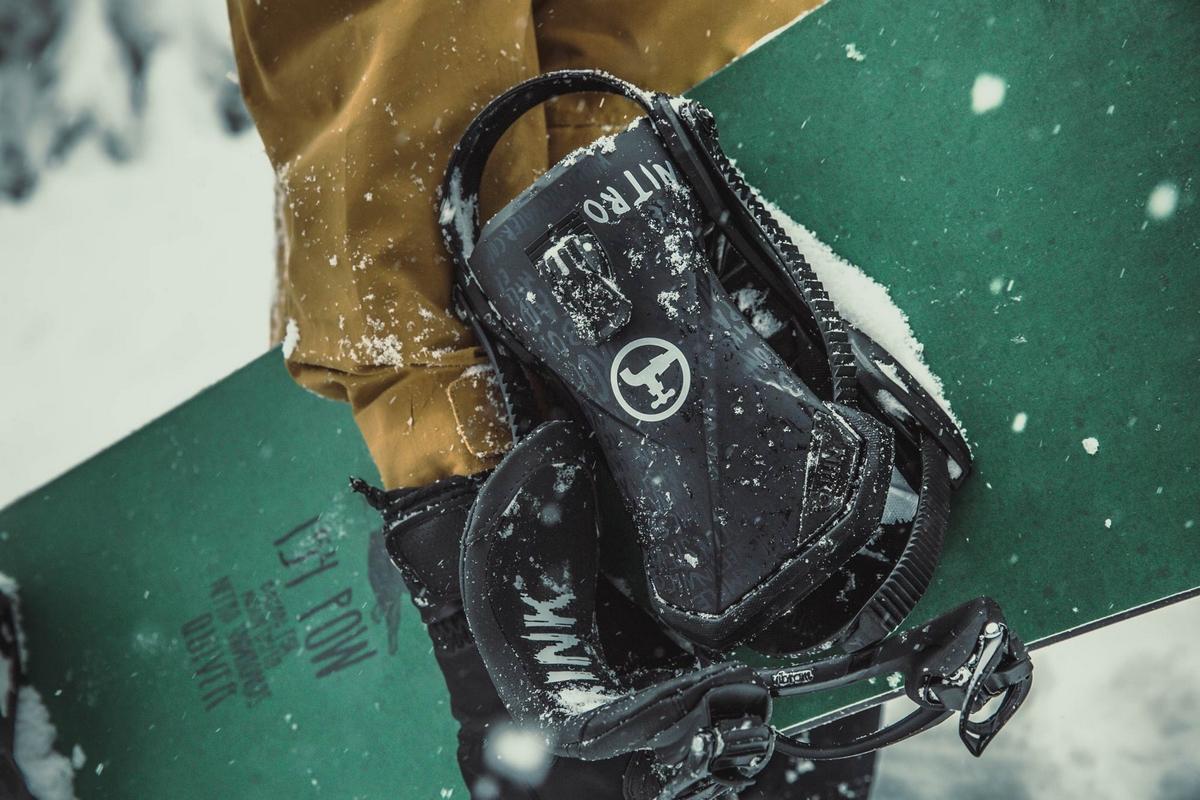
A snowboard set up is made of 3 main components. A snowboard, boots and snowboard bindings. Often, buyers pay attention to the board and boots but bindings always come last. Trust us, bindings matter and going for the cheapest option is rarely the best choice.
Bindings are just as important as the rest. They are your direct connection to the board, they transfer your energy to it and return this energy if need be. Bindings maximise control, comfort and precision, they are a key component that can enhance your riding experience or literally ruin your day if picked wrong.
In order to help you better understand how they work and why they're important, in order to help you choose the right bindings that will match your board, your style and your needs, we made this guide for you.
Where to start your selection?
First we'll go through the various elements that define a snowboard binding. We'll then have a brief overview of the different types of bindings available on the market and how a binding can compliment a riding style. We'll finish on the compatibility issues to answer questions like "Will these bindings fit on my board?".
This should give you enough material to refine your selection to a few models only. Then what? Well, snowboard bindings do affect performance and riding, but they're also a piece of fashion. If you worked well, your selection should only include binders that work for you. So relax a little and pick the one you like the most. It's nice when it matches the board!
One more thing. Budget. You'll probably wonder why there is such a gap between low-end bindings and top-shelf ones. We're not going to go through every detail that makes a price but basically, the more money you'll spend, the more comfort and performance you're gonna get. Higher-priced bindings are generally better padded. They feature softer dampening systems, cushier straps, ergonomic highbacks, and so on. A binding can literally ruin your day. If your straps are not nicely designed they can alter your bloodflow or create pressure points. A highback can create calf pain and make your legs sore for days. Sometimes, it's really worth spending a little extra and getting something you actually feel good in.
You're also paying for performance and durability. An aluminium chassis, magnesium buckles and a urethane highback are obviously going to last longer than a plastic chassis, buckles and highback, but they're going to be more expensive. They're also going to feel more responsive and more reliable. If you're only riding a couple of days a year then this is totally fine, bindings are meant to be ridden no matter what they're made of. But if you're advanced, if you ride several weeks a year and rarely hold yourself back on the slopes, then you may want something that can withstand your treatment :)
Anatomy of a snowboard binding
There are several components making a binding.
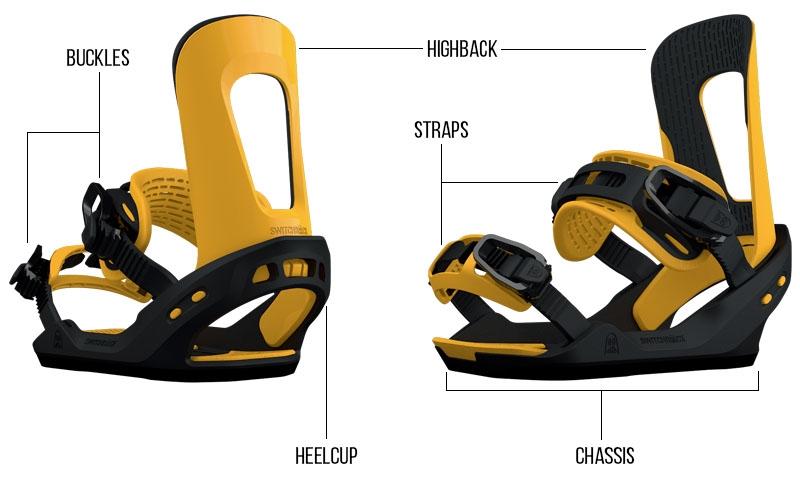
- Buckles: the buckles guarantee a secure closure of your binding. Using a ratchet system on a ladder strap, buckles are super handy and easy to use. In most cases you just need a few clicks to get a secure fit on your boots. Again, buckles are available in different materials. Lower end bindings tend to come with plastic buckles which are light. High-end buckles feature aluminium or even magnesium buckles offering the best strength to weight ratio.
- Highback: the highback is the vertical plate behind your lower calf. Highbacks provide support throughout the turns and transfer your energy to the board. Available in different materials, you'll find a variety of heights, flexes and shapes. Generally speaking, shorter and/or softer highbacks work well with freestylers or beginners. They offer more mobility and make the ride more playful and forgiving. On the other hand, taller and stiffer highbacks are best suited for freeriders or advanced riders. They deliver more control, more precision and more reactivity.
But there are no right or wrong choices, riding is a matter of personal feel. You may be a freestyler who likes to ride with tall carbon highbacks or a powderhound looking for a flexy binder. Choice is yours!
- Heel cup: Heelcups are those metal or plastic loops at the base of the highback (they are not connected). On some bindings, heelcups are just the extension of the chassis (1 piece). On other bindings, the heel cup is an actual component and can be adjusted forward or backward for a proper fit. You want the heel of your boot to fit in nice and snug. The heelcup transfers your energy to the chassis, then to the board.
- Chassis: it is the soul of your binding. Its main piece and the actual connection with the board. Chassis, also called baseplates, can come in a variety of materials from regular plastic to aluminium and other alloys. They have a central part in the riding game. They transfer power to the board with speed and accuracy but they also absorb impacts, shocks and vibrations caused by landings, terrain changes or speed. They should alter the board's flex as little as possible and they must be strong as they are under a lot of stress all day.
- Footbed: it is actually part of the chassis. The footbed is where lies your foot. Footbeds are often padded with EVA foams but you can find other dampening systems like air cushioning. Sometimes, footbed are canted. This means they are slightly tilted (inward) so that they create a better alignment ankle-knee-hip. It helps reduce stress on your joints and minimise fatigue. Footbeds increase comfort and feel.
- Straps: a snowboard binding features two straps, in most cases. The toe strap and the ankle strap. Ankle straps are pretty straight forward. They loop around your ankle to maintain your boot in position and transfer the energy of your moves to the chassis. High-end straps are padded and designed to reduce pressure points and possible foot pain. However, toe straps can differ.
Traditional toe strap
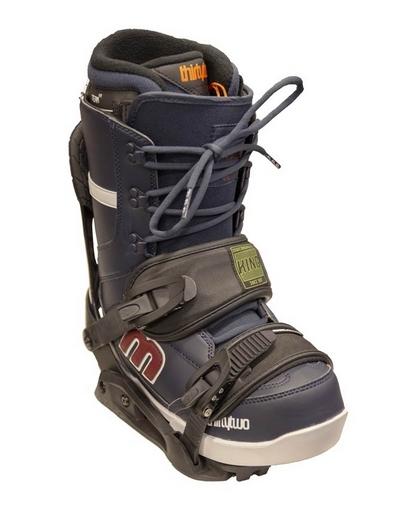
The traditional toe strap goes over your toes and hold your boot on the footbed. They're pretty basic and less and less popular.
Cap strap
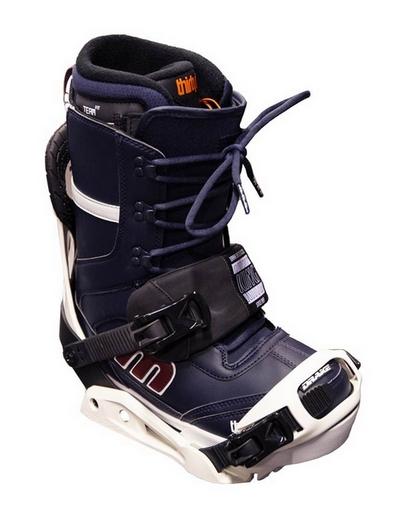
The cap strap offers a more secure grip on the boot as it wraps the toe box in front of the boot and pushes it against the heelcup.
1-piece strap
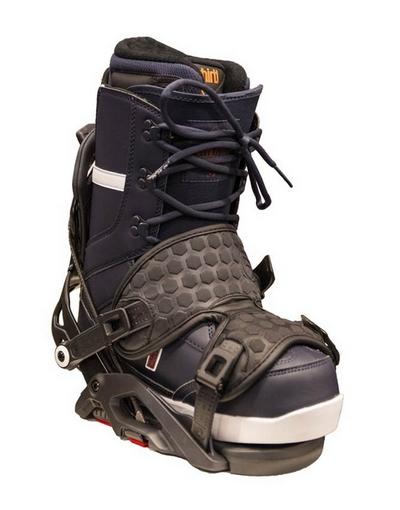
You may find bindings with only one massive strap instead of two straps. Often featured on rear-entry bindings, they cover the boot and offer a snug and strong hold.
Hybrid toe strap
The hybrid toe strap is a mix of both. Usable as a traditional toe strap or as a cap strap, the hybrid strap is also called convertible strap.
Types of snowboard bindings
If strap-in bindings have been ruling the industry for decades, we've recently seen new types of bindings come into the market. We've divided them into 3 categories.
- Strap-in bindings
- Speed-entry bindings
- Step On bindings
Strap-in bindings

These are the most common bindings on the market. They come with two straps (toe and ankle), a chassis and a highback. They are generally highly customisable. Adjustable heelcup, forward lean, straps, gas pedal or canting, strap-in bindings can be tweaked to your liking and are suitable for any kinds or riding. They are not the fastest bindings to adjust but they're super reliable and pretty comfortable.
Speed-entry or Rear-entry bindings

These bindings were introduced a while back and shook the entire industry with their innovative design. They made strapping in and out a lot easier and way faster. How so? Rear-entry bindings have a hinged highback which can be lowered. This opens the rear of the binding and allows you to slide your boot in. To close it, just pull the highback up and lock the switch. It literally takes seconds and can be done on the fly. If you've never used it, the first tries can be a little tricky but rear-entry bindings are a real time saver. If you don't want your skier friends to wait for you anymore, this is your option.
Step On bindings
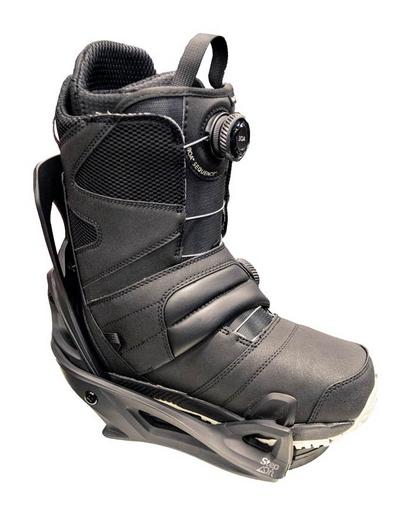
These are super new. Released by Burton in 2017, they are bringing back an old concept (Step-in bindings) and made it better. Step On bindings are hasslefree. No more strapping, no more ducking, bending, adjusting, it's all over. The idea with Step Ons is to click your boot to the binding (with pins on the side and the back of the boot) and you're ready. There are no straps. Straps being the first cause of pain on bindings, it's obvious that Step On bindings are comfortable. It's just a different feel that you need to get used to but they're a game changer. Note that Step On bindings only work with Step On boots.
Bindings and riding style
All snowboard bindings are versatile and can easily deal with anything you throw them at. Nevertheless, some bindings will do a better job in the snowpark while some others will best perform on the steeps. The main element that makes a binding suited for this or that terrain is its flex. But the shape of the highback, its height and lean or the canting are as many elements that give your binding its unique DNA.
If it is more accurate to speak about a soft, medium or stiff binding, we've put them into freestyle, freeride and all-mountain categories for you as we think it makes more sense.
Freestyle bindings
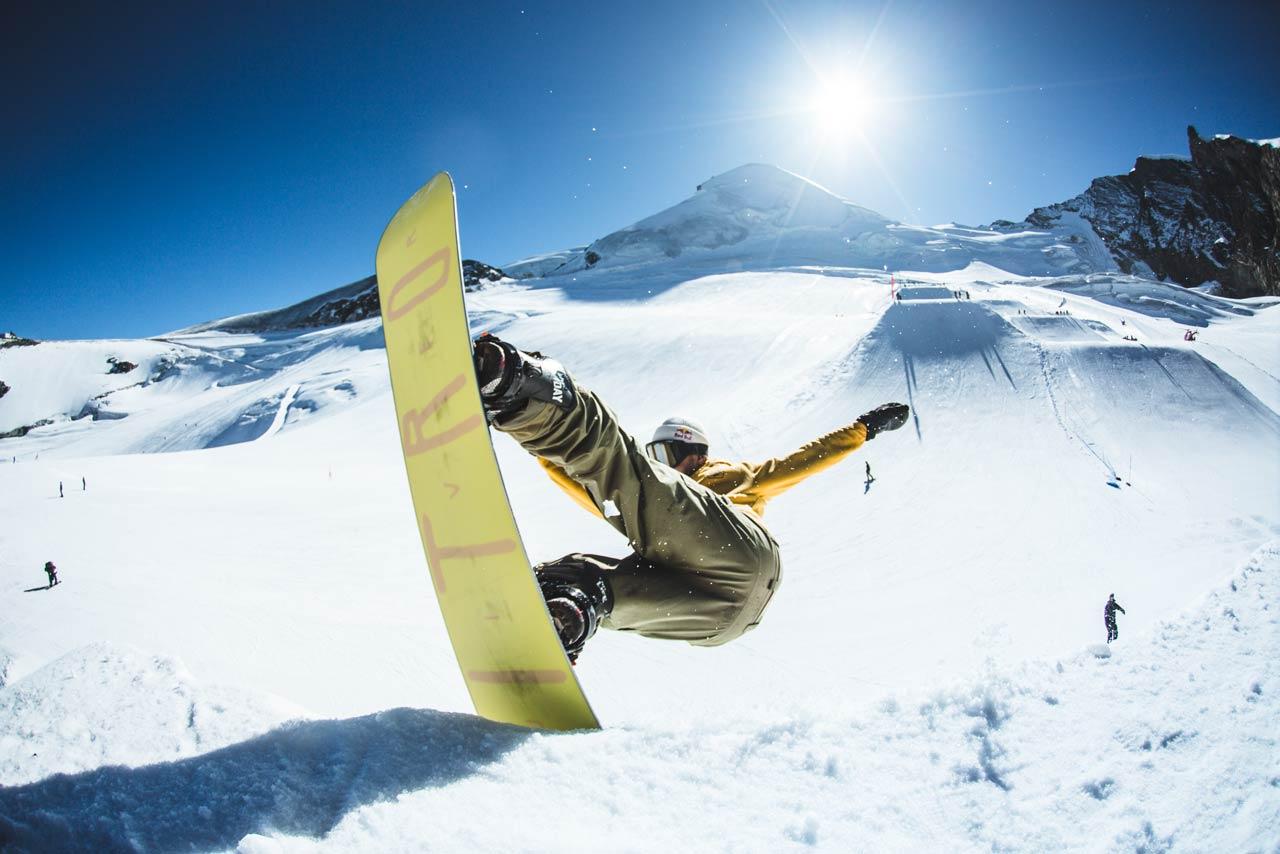
Freestyle snowboard bindings are generally softer, well padded and canted. Often featuring short asymmetrical highbacks with a hollowed profile emphasizing flex and lightweight, these bindings want to give you the ultimate mobility. Shorter highbacks are more forgiving and often offer a very soft lateral flex. This allows riders to lean forward or backward (press tricks) or to tweak their grabs easily. As a general rule, the more mobile you are, the easier the tricks.
Freeride bindings
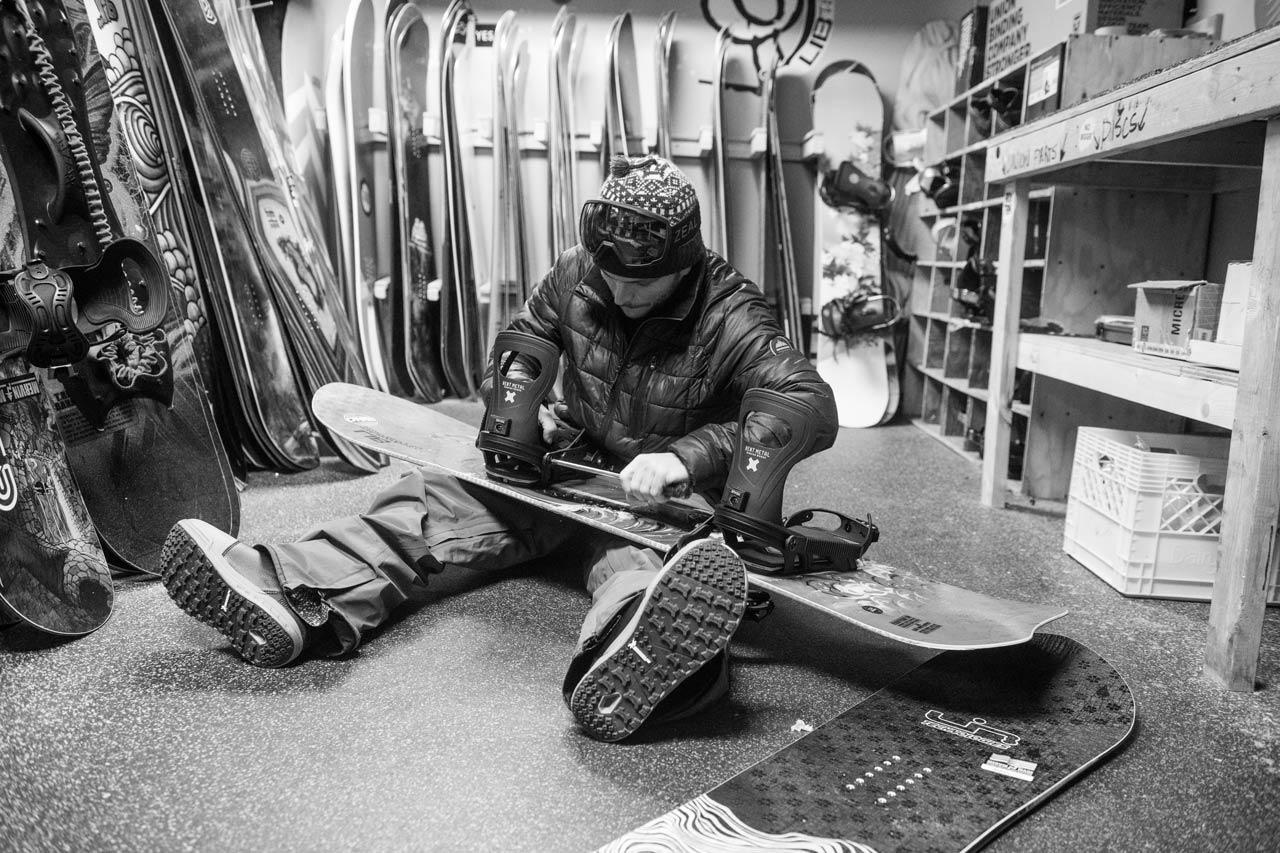
Freeride binders are the most powerful of all. Built with reactivity in mind, they are very stiff and precise with tall highbacks and responsive materials. Designed for hard chargers who need maximum control, freeride bindings often feature carbon or other stiff material for that extra bit of response. Best suited for advanced or expert riders, these bindings are not forgiving and require skills and control.
All-mountain bindings
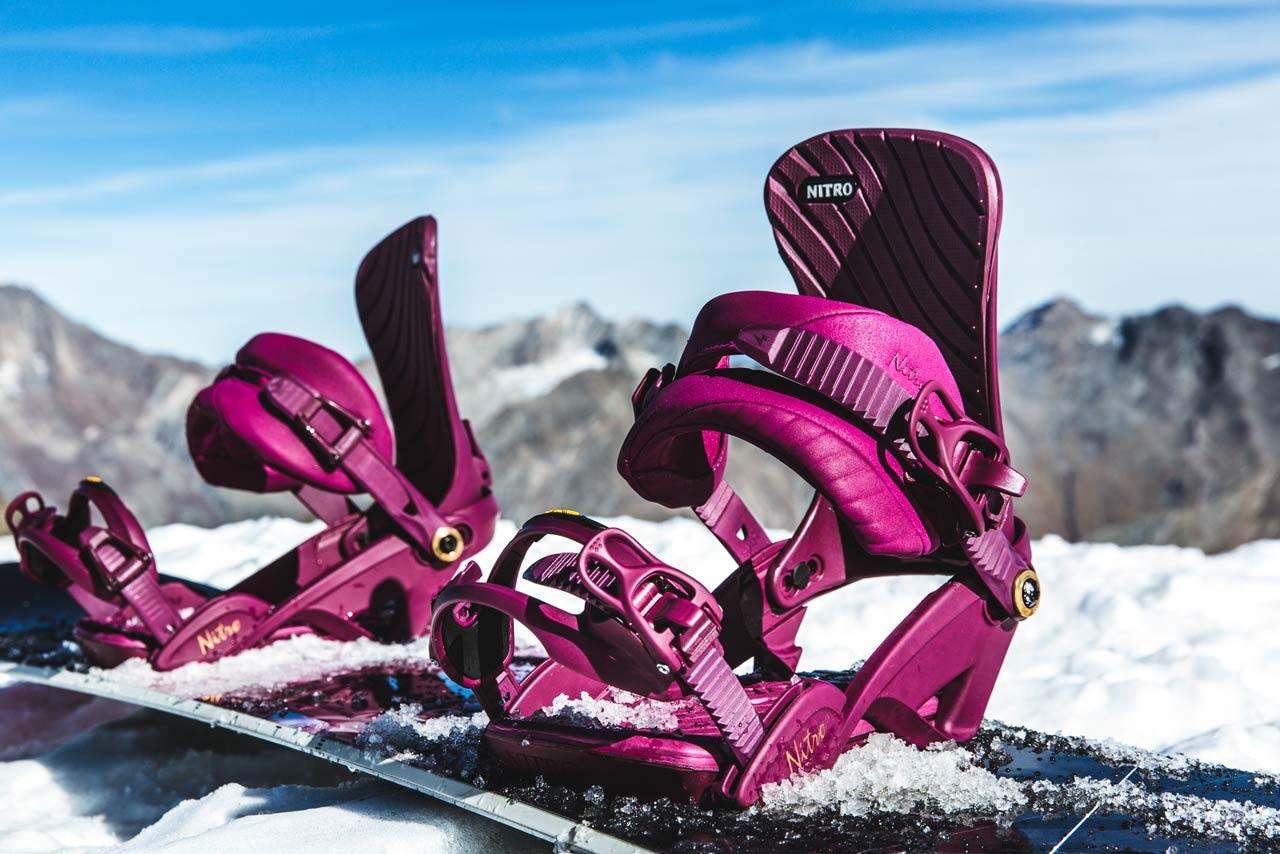
All-mountain snowboard bindings are the in-between. Not too soft, not too stiff, they come with a medium flex allowing riders to start the day with a powder run and end it with a few park laps. These bindings have no favourite playground. They perform on hard and soft snow conditions and are real multitaskers.
Again, this is only a common rule and it does not necessarily apply to you. You'll meet freeriders who like to have the mobility of a freestyle binder on their feet and who are ready to compromise precision for it. And you'll see freestylers who want their bindings to be super responsive. Snowboarding is a matter of feel. Our best advice would be, if you can, try a bit of everything before buying, ride soft, ride stiff, ride medium, see what feels best and then buy it.
Compatibility of snowboard bindings
This is a common question we have so we are going to show you what options you got. It's actually pretty simple. There are only 4 systems available on the market. 2 of which are very similar and represent the vast majority of snowboards out there. You got:
- 2x4 patterns
- 4x4 patterns
- Burton 3D
- The Channel
The 2x4 is probably the most common system in the industry. It should actually read 2cm x 4cm. 2cm is the vertical distance (tip to tail) between each insert and the 4cm is the lateral (edge to edge) distance between the two lines of inserts. In general, 2x4 systems count 12 inserts for each foot (24 per board). This system complies with pretty much any binding available on the market, except Burton EST bindings.

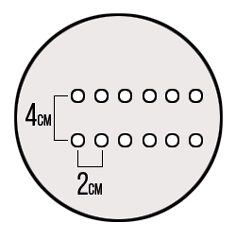
The 4x4 is very similar to the 2x4 and works the same way. You'll place the disc of your binding over the holes (inserts) and adjust it as you like. Again, 4x4 means 4cm x 4cm. Boards with this system have less holes (6 under each feet in general) but they are compatible with the same kinds of bindings. In theory, these systems offer a narrower range of stance options (less holes = less positions). But nowadays, most bindings manufacturers make bindings discs with 'sliding slots' allowing for the same adjustments as 2x4's.

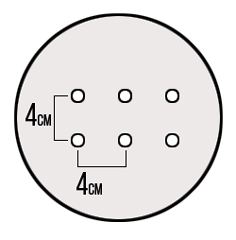
The 3D pattern is (or was) used on Burton boards and looks pretty different compared to the two previous ones. Its diamond or triangle shape does not work with 2x4 or 4x4 discs and requires a 3d-compatible disc. Most major binding manufacturers provide 3D-compatible discs with their bindings and they come with Burton bindings too, obviously. However, 3D patterns are not much in use anymore. You'll find them on old Burton boards and bindings or on kids entry level boards from newer collections.

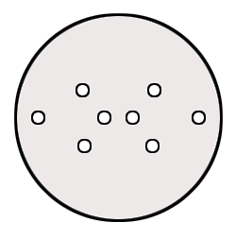
The Channel (formerly ICS) is a Burton-patented technology, recognizable by the long and thin slot running under each foot. Featured on Burton snowboards, the Channel gives you an infinite range of stance options. Basically, you'll feed two bolts into the Channel, slide them in and adjust position and angle before tightening them down.

Now we're getting to the tricky part so pay attention :)
- Burton EST bindings ONLY work with The Channel.
- All Burton bindings work with the Channel and all Burton non-EST bindings work with all snowboards available on the market.
- Other bindings from other brands may or may not work with the Channel. Depending on brands and models, compatibility can be an issue. The information shows on all our product pages but if you have a doubt, please contact our knowledgeable staff for a quick answer.
In a nutshell
We hope you've learned some things here. Snowboard bindings are worth spending some time understanding them. They can truly transform your riding experience and significantly increase your comfort over the season. If we summarise everything up in a few lines, here's what you need to remember:
It is the flexiblity of the binding that gives it its personality.
The more money you'll spend, the more comfort you're gonna get. Better cushioning, dampening, straps, materials, etc.
Always make sure the bindings you buy are compatible with your board. Most bindings work with most boards, but there are exceptions. Ask us if you're not sure!
